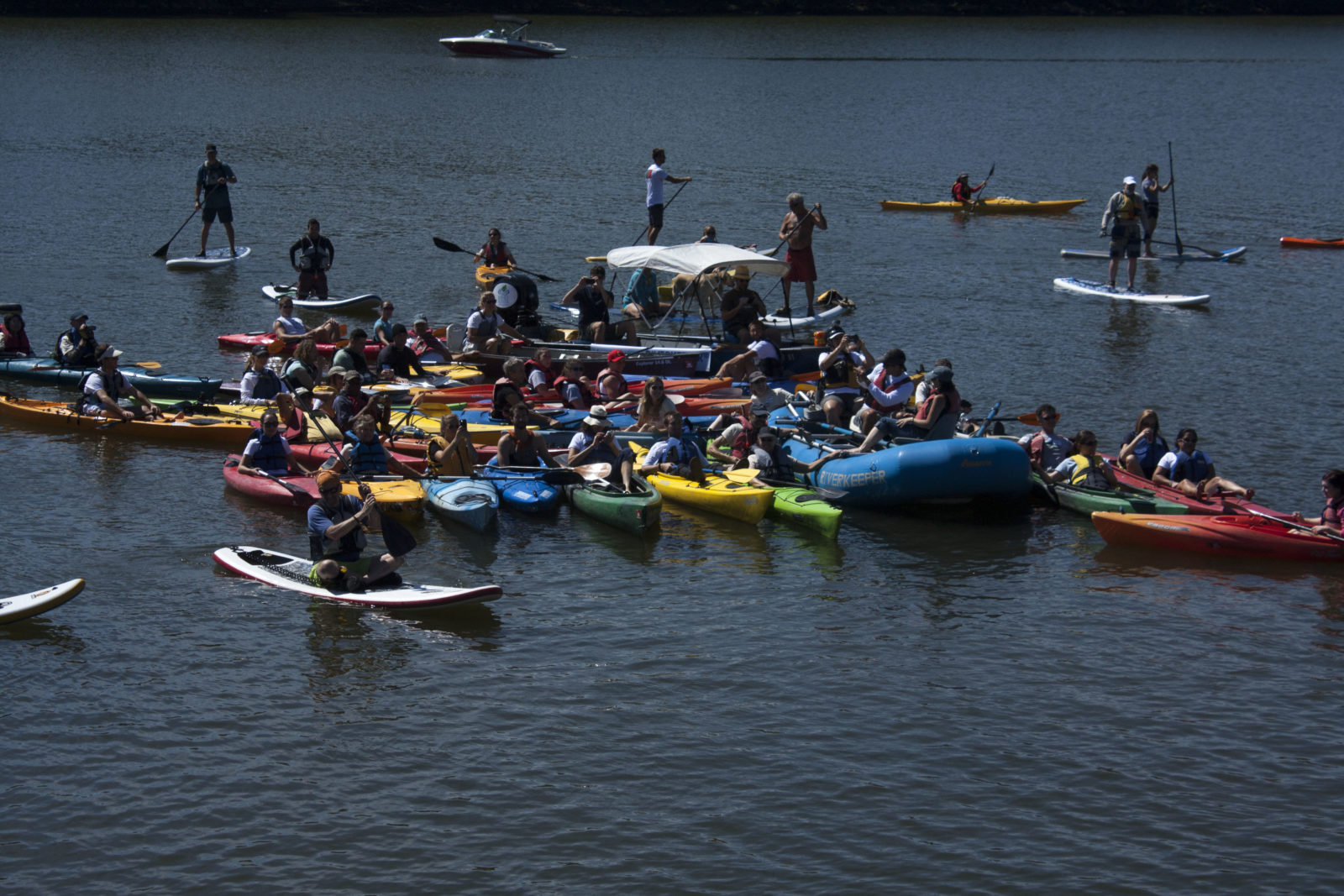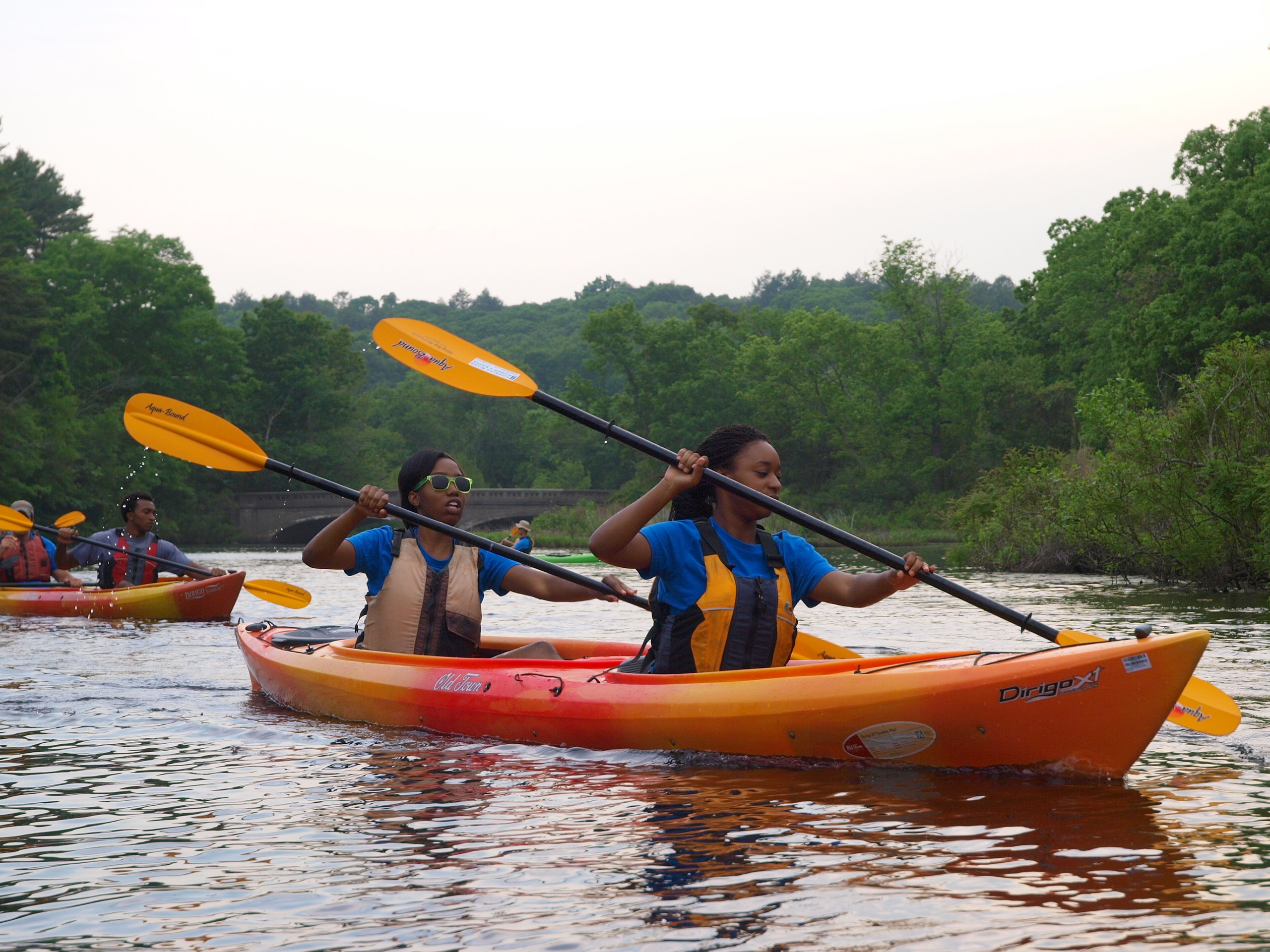We have much more to do and your continued support is needed now more than ever.
Clean water is a public right, but it is also…

This blog is the second in a six-part series. Here are the first, third, fourth, and fifth parts.
The Supreme Court of the United States (SCOTUS) held opening arguments on Sackett v. EPA on October 3, 2022. Much of the debate centered around which test was the best to use in determining what constitutes a protected water under the Clean Water Act. The Supreme Court Justices had a number of direct questions for the Pacific Legal Foundation, the law firm representing the Sacketts in this case. Many blogs, articles, and press releases have already covered the details of the oral arguments, and anyone interested could also listen in real time as arguments were streamed live online and saved on the SCOTUS website. But what was it like to listen to those arguments and to rally in-person in favor of the Environmental Protection Agency?
A personal matter
October 3rd was a cold and rainy day with zero sun in the sky. I woke up early and I trekked to the Supreme Court to try and get inside for the hearing. I stopped for coffee at Le Bon on the way. As I approached the court and viewed the line of advocates, young professionals, and press hoping to enter the court, my plans to get inside went right out the window. I realized that my efforts would be better spent rallying, calling for change, and bringing attention to the importance of this case. I soon found my coworkers and peers and tried to stay warm ahead of the rally. As arguments got underway, CEOs, presidents, and representatives from environmental advocacy organizations across the country stood up to speak.
As I listened to their speeches and calls for action, I began to reflect on my own place in environmental advocacy. I considered the question ‘what steps in my life led me to this point – standing in front of the Supreme Court of the United States calling for water justice? I thought about the experiences that introduced me to the importance of water. Through both personal experiences and learning about the environment at school, I saw how many ways people were impacted by water and what a critical resource water is. The overuse of water and restricted access to it usually influences the welfare of a community. Everyone needs water to live, and yet people of color and communities of lower wealth disproportionately face issues like lack of access to water or inferior water quality.
A complex and nuanced topic
With the opening arguments going on, I couldn’t help but notice how distinctly different the conversations around the Sackett case and the actual impacts of water pollution seemed. Some people talked about environmental justice, but they seemed to be separate discussions from the point of the Sackett case! The SCOTUS was focused on these complex regulations – essentially how to define concepts of navigable waters and waters of the United States (WOTUS), when really, the resolution of the case will impact water, broadly speaking.

But for people who are experiencing water insecurity and who regularly come in contact with polluted water, the concern is ultimately not around what navigable waters are and whether or not their water supply is considered a protected water of the United States under the Clean Water Act. What REALLY matters is whether or not there is clean water coming out of the tap and whether people have a healthy environment for recreation and enjoyment.
Unfortunately, quite divisive
Polluters continue to damage the critical water resources that we all rely on for their own financial gain. Those entities have the resources to selfishly exploit gaps in the Clean Water Act, especially around issues of equity and justice, or act as a proxy for special polluting interests.
Considerable time and money is dedicated to learning about the control of water resources by these actors in order to protect and grow their market interests, often with disregard for environmental protections. Sharon Astyk, an environmental author, wrote in ‘Depletion and Abundance’, ”the hand that stirs the pot rules the world,” suggesting that those who control critical resources such as food and water also control much of the economic and political direction of the world. The value that the control of water holds is well captured in this quote. Water resources impact so many aspects of life, and those with control are able to protect their interests first and foremost.

An ongoing struggle for balance
However, water pollution eventually catches up with everyone. Rescinding Clean Water Act protections by ruling in favor of the Sacketts would not only bring the country back to rivers on fire, and sludge flowing down the streets, but it would also significantly reduce the quality of life in the immediate and long term for countless people.
Continued abuse of the environment may financially benefit a few in the short term, but it negatively impacts everyone in the long run. By connecting the real impacts of water pollution and environmental justice implications to the complex legal terminology and arguments being made in this SCOTUS case, the impacts of water pollution can be more clearly understood and acted on. Advocating for clean water must also mean advocating for environmental justice.





















